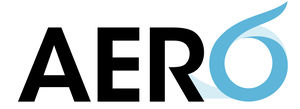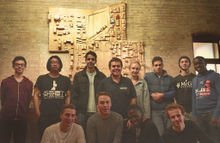Difference between revisions of "McGill Aerospace Design Society"
Malcolmmcc (talk | contribs) (Created page with "{{Infobox | title = McGill Aero | image = 300px | headerstyle = background-color:#eee | label1 = Lab Location | data1 = MD53 |...") |
Malcolmmcc (talk | contribs) |
||
| Line 1: | Line 1: | ||
| + | {{WebsiteIcon|1=http://aeromcgill.com}}{{FacebookIcon|1=http://fb.com/aeromcgill}}{{EmailIcon|1=aero.president@mcgilleus.ca}} | ||
{{Infobox | {{Infobox | ||
Revision as of 22:03, 10 May 2018
The McGill Aerospace Design Society (aka AERO McGill) is a shared platform for all aerospace engineering design teams at McGill. We provide the organizational frameworks, mentoring, and tools, as well as 100% of the funding for design teams that we accept in our society.
Contents
History
One reason for the previous lack of aerospace design teams was the difficulty in starting a new team from scratch. With Aero McGill, students interested in starting a new project can skip the process of starting and promoting a team, acquiring initial funding, gaining official status at McGill, and finding resources for design, manufacturing, and testing. This gives the design teams more time to spend designing their actual projects. We hope to expand the current group of design teams to include all three SAE Aero Design East competitions (Micro, Regular, Advanced) as well as Unmanned Systems Canada’s Student Unmanned Aircraft System design competition. All design teams bear the Aero McGill’s branding, projecting a unified and collaborative image to the McGill community at large.
At Aero McGill we encourage the development of professional and engineering skills that match industry standards to cultivate a learning experience that extends beyond the reach of any classroom.
In 2015, AERO McGill participated in this competition for the first time and placed 16th overall – ahead of many teams competing for five years or longer. Following our goal of continuous improvement, we hope to place in the top 10 for 2016.
Upcoming Competitions
This year AERO teams will be competing in four different competitions – three featured from the SAE Aero Design East Series and one from Unmanned Systems Canada.
Core Competitions
Micro Class
The objective is to design, build, and assemble a hand-launched, remote-controlled, fixed-wing aircraft. Points are earned for carrying heavy payloads while minimizing the weight of the aircraft. A definitive constraint of this competition is that the aircraft must be able to disassemble and fit into a tube with a 12.7cm (5.0in) diameter.
Regular Class
The objective is to design, build, and assemble remote-controlled, fixed-wing aircraft. Points are earned for carrying heavy payloads similar to the Micro Class. The gross weight of the plane cannot exceed 25kg (55lbs), and the sum of the length, width, and height cannot exceed 444.5cm (175in). Thus, the Regular class aircraft will be much larger and powerful than the Micro class while maintaining similar mission objectives.
Advanced Class
The objective is to design, build, and assemble a remote-controlled or autonomous aircraft. Points are earned for executing missions that are changed annually. In 2015, the mission was to fly the aircraft around a course and drop a 2.27kg (5.0lb) package in a designated drop-zone. A definitive constraint of this competition is that the aircraft must have an empty weight no more than 3.63kg (8lbs) and the sum of the length, width, and height must not exceed 444.5cm (175in).
Unmanned Systems Canada
The objective is to design, build, and assemble an autonomous fixed-wing or multi-rotor aircraft. The competition’s scenario is changed annually. However, the vehicle must have a gross weight of less than 10kg (22lbs) and be capable of autonomously completing a variety of ground-oriented tasks such as terrain mapping and target analysis.

